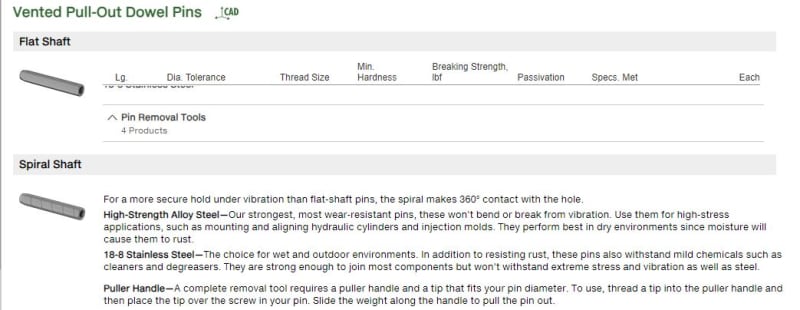freerangequark
Mechanical
- May 11, 2005
- 88
I have a machine design featuring steel dowel locating pins and diamond points pressed into blind holes in :
[ul]
[li]steel castings[/li]
[li]aluminum casting[/li]
[li]steel machined parts[/li]
[li]aluminum machined parts[/li]
[/ul]
Someone suggested that we should be using vented pins to make insertion easier;
Our company's standard pins are not vented, nor do our design standards for pin use mention vented pins.
What should be dictating cases when vented pins should be used or not used?
Are low interference versus medium or high interference fits less likely to need vented pins to aid in insertion?
Where can I learn more on this subject?
Thank you,
Glenn
[ul]
[li]steel castings[/li]
[li]aluminum casting[/li]
[li]steel machined parts[/li]
[li]aluminum machined parts[/li]
[/ul]
Someone suggested that we should be using vented pins to make insertion easier;
Our company's standard pins are not vented, nor do our design standards for pin use mention vented pins.
What should be dictating cases when vented pins should be used or not used?
Are low interference versus medium or high interference fits less likely to need vented pins to aid in insertion?
Where can I learn more on this subject?
Thank you,
Glenn

